DOUBLE your Website Conversion Rate Instantly With 1 Simple Change
Have you ever gone to a restaurant before and purchased a product/service because it was recommended by a friend or family member? What motivated you to proceed with that action?
It’s trust. We like to say at our agency that we now live in a trust-based economy. We live in a world where millions of brands compete with one another every day to obtain the top position.
The one factor that separates the ones that make it and don’t is how much trust they’ve built with their customers. Our goal with this article is to ensure your business remains on the top by implementing effective social proof on your website.
You can claim you have the best products or services in the world on your website.
But the truth of the matter is, customers don’t care about what you or your company thinks.
What they really care about and trust is what other people are saying about your business.
We’ve run countless number of testing and analytics on the website redesigns we’ve done at our agency. In almost every single website we produce, we always, always, always implement social proof and have seen massive increases in conversions upwards of 200%.
Want to know how you can double your conversion rate instantly, build more trust with users, and generate more growth for your business? We uncover several strategies and examples in this article.
What is Social Proof?
In the context of a website, the goal of social proof is to motivate users who are coming to your website for the first time to further scroll down a page or pursue your call to action.
Typically, it’s in the form of testimonials, case studies, stats about your business or the impact you’ve made, featured publications etc.
Why is Social Proof Important On Your Website?
In order to put this into perspective for you, let me go through some quick stats.
According to boast.io, websites that include testimonials receive 45% more traffic than websites with no testimonials. Testimonials can increase conversions on sales pages by as much as 34%.
Adding logos on a landing page can also increase conversions by 400%.
Lastly, according to Trustpulse.io, 97% of consumers read customer reviews before making a purchase. In addition, online reviews of products increase sales conversions by 270%.
When it comes to the actual psychology behind social proof, it makes complete sense. We as humans are driven to feel socially accepted and admired. All purchasing and buying decisions are directly influenced by what we think other people will perceive. Everything from clothing to the brand of makeup you purchase is influenced by social proof.
But wait, I already have social proof!
You may be saying, Arsh, I already have testimonials, featured publications, case studies and all this social proof on my website, but my conversion rate is still low.
Here’s the important part that 99% of people get wrong.
They put social proof too far down the page where most people will not reach that far down statistically. or they do not integrate it effectively and cohesively into the rest of their site.
I cannot tell you how many times I see websites where they have all this great content, clear value proposition, beautiful images, but then they throw their testimonials or case studies all the way down to the bottom of the page where most users won’t even reach statistically.
You need to have your social proof higher up the page, and depending on the social proof, we’ve seen the best results when putting it right at the top and underneath the hero section.
Go and experiment. Look at some of the world’s most popular brands and websites.
I guarantee you that the vast majority of them are incorporating social proof in some shape or form, and they are putting it right at the top of the website.
To save you some time, we’ve found several examples to go through below.
Example #1) of Effective Social Proof
Everyone should be familiar with the first example of Shopify unless you live under a rock. They perfectly incorporate social proof right at the very top of the website.
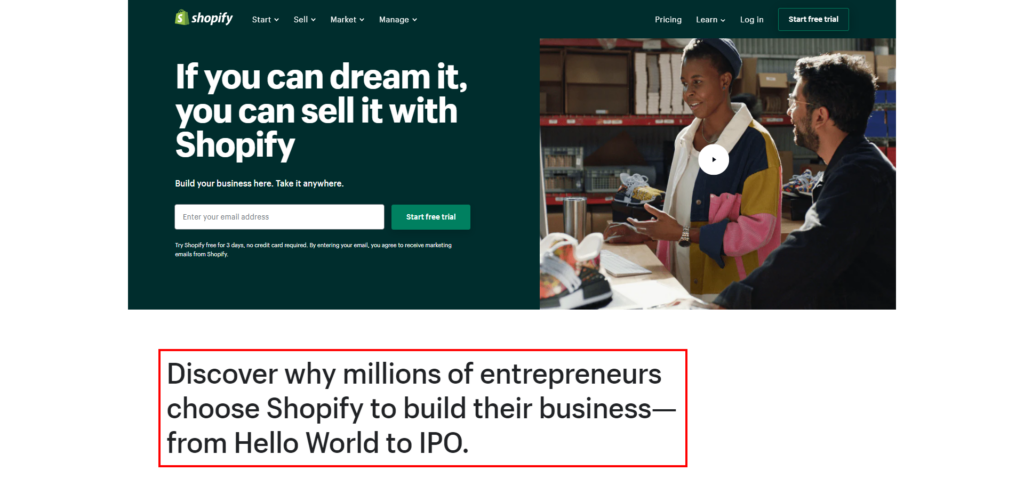
“Discover why millions of entrepreneurs choose Shopify to build their business”. This is such a powerful statement telling me directly as a user that millions of people trust Shopify, what’s stopping me from also trusting them?
It’s building credibility and authority in the space. It’s feeding into the basic human psychology of wanting to do what others are doing and follow their actions.
Notice Shopify doesn’t put this down at the bottom of the page? It’s right at the very top underneath the main hero image banner because they understand the principles of a high-converting website.
Example #2) of Effective Social Proof
Look at Stripe and Slack, two massive corporations. Both incorporate social proof right at the very top of the website by featuring companies they work with and are trusted by.
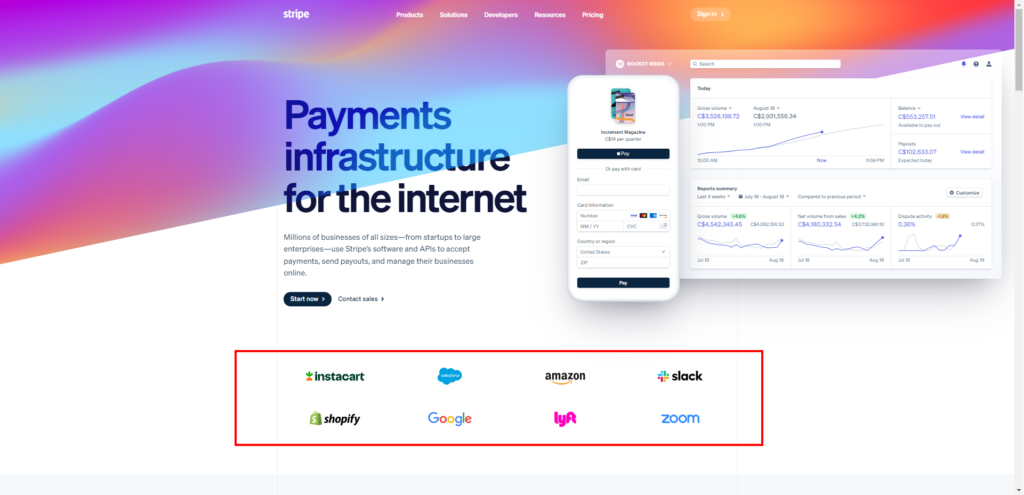

As a user coming onto the website for the first time, this is going to motivate me to further scroll down the page and engage with the website.
Remember, the average attention span of a human being is decreasing every day. If you don’t build immediate trust, chances are, that user will exit the website and bounce as we’ve seen time and time again.
Example #3) of Effective Social Proof
QuickBooks uses a different example of social proof. They feature their 4,491 reviews on Capterra averaging 4.5 stars right in their main hero image banner section. Brilliant.
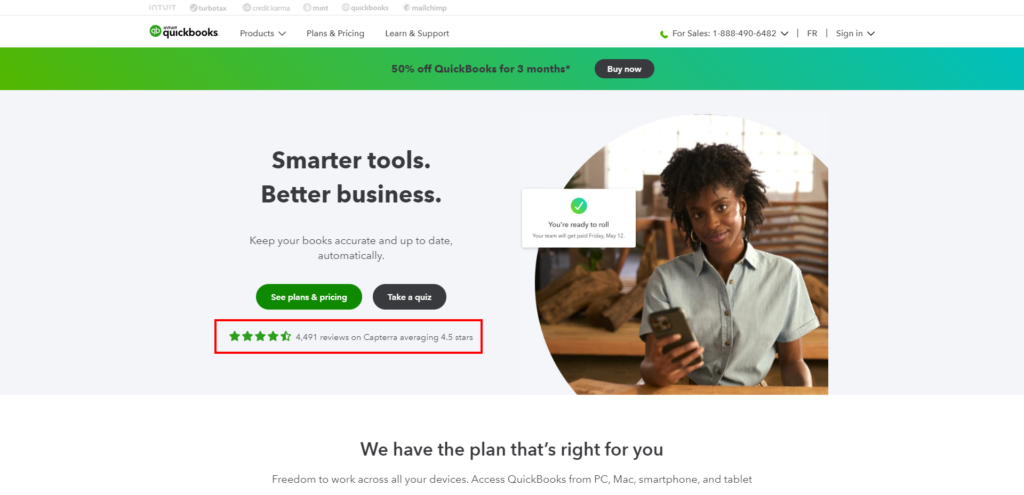
We actually did something similar for one of our clients, Milan Singh, an influencer with over 3M+ followers across social media.

By adding one simple line of micro-copy (“500 spots available for a limited time only”), we were able to increase conversion rates and drive higher click-through rates on the CTA.
This is known as establishing urgency and scarcity which is a bit different than social proof, but it helps illustrate to you the power of small changes driving big results.
Example #4) of Effective Social Proof
This next example is probably one of the best I’ve seen across the hundreds of websites I’ve audited.
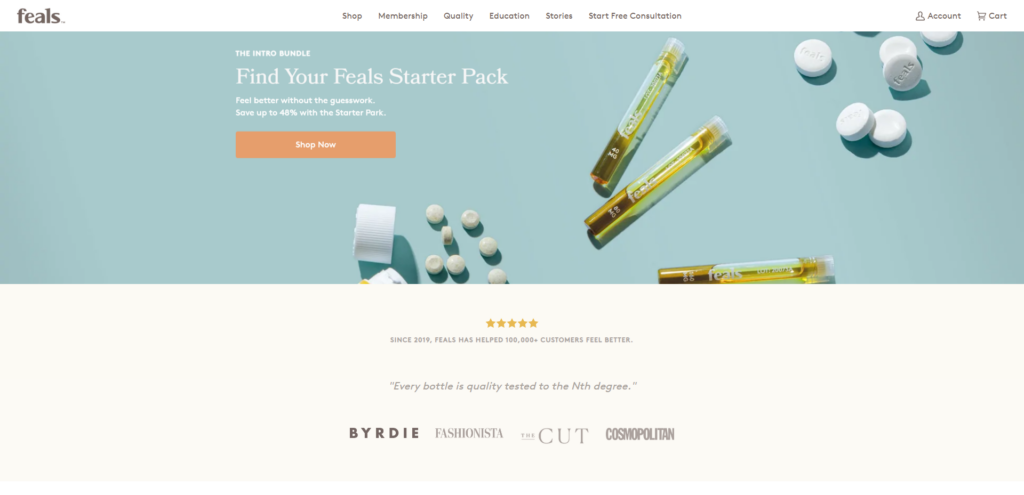
What Feals does super effectively is stack their social proof. They have a section that reads ‘since 2019, Feals has helped 100k+ customers feel better’. This is so powerful for me as a user knowing that 100,000+ customers have felt better as a result of using their products.
But they don’t just stop there. They also have logos of publications they’ve been featured in
AND
They also have a sliding testimonial section to seal the deal. And of-course, the design of the website is beautiful which just helps amplify the social proof even more.
Again, they put the social proof right at the very top.
Not in the middle.
Not at the bottom.
At the top of the website.
Why is this important? 60% of people actually don’t scroll past the main hero image banner section of a website because of either poor messaging, design, or lack of social proof. You want to make sure you avoid losing out on a bounced visitor.
Example #5) of Effective Social Proof
The next example is Mint.
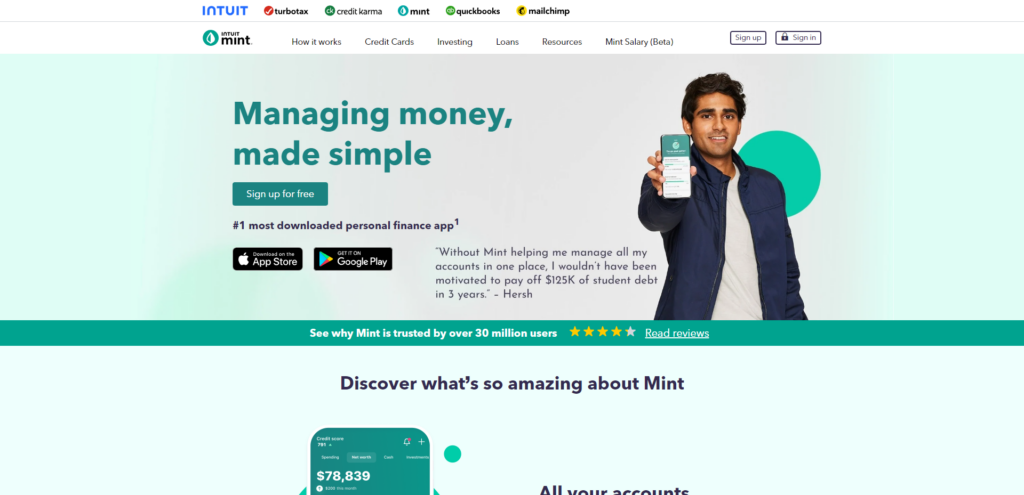
Very similar to Feals, they stack the social proof so effectively. They have a ‘#1 most downloaded personal finance app’, a testimonial, AND a ‘see why Mint is trusted by over 30 million users’ section.
And all of this social proof is centered around the main call to action button which is to ‘sign up for free’.
Why do I even need to keep scrolling down? To be honest, as a user, I have all the information I already need to pursue the call to action and sign up for an account.
Why? Because I’ve built trust with the company right off the bat.
Example #6) of Effective Social Proof
Have you ever been on a website and the testimonials look fake? Using stock photos you can find on Unsplash or Pexels definitely gives it away.
But you can just tell that the testimonial is not genuine. Or the business just slaps the testimonial in some random area of the website that has no correlation to what precedes and proceeds it.
Figma eliminates this skepticism by integrating testimonials cohesively into their website copy. They have a section talking all about Figjam. Pretty standard section, nothing special here.
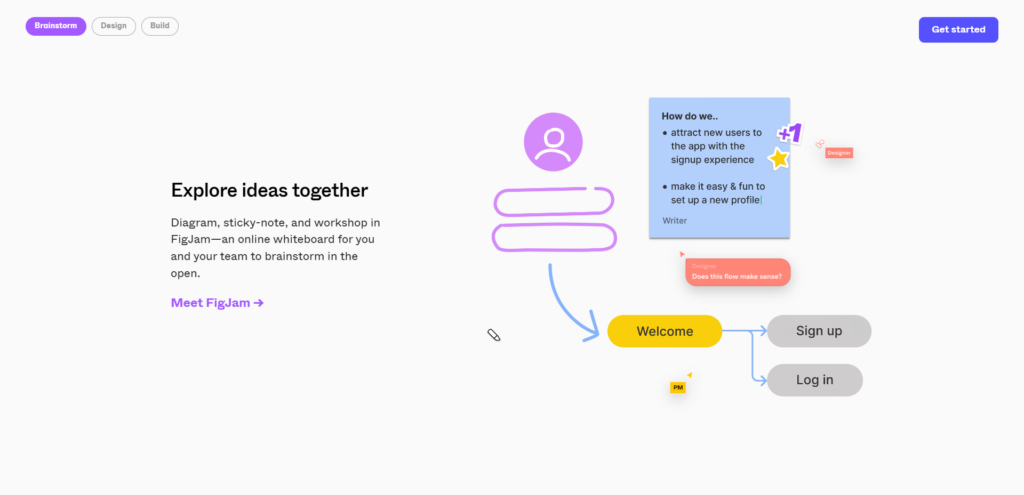
But then what they do which is super effective is placing a testimonial right underneath one of the main benefits they offer.
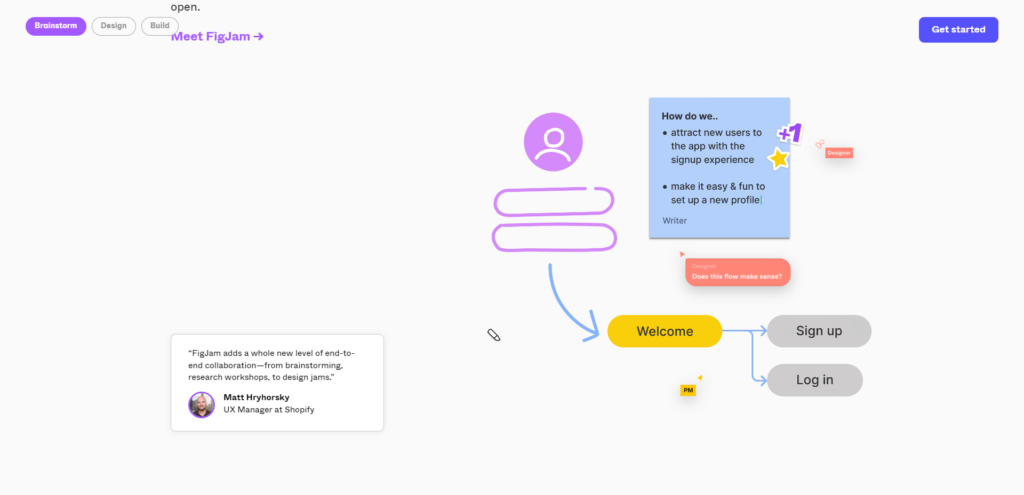
What better way to back up one of the points that you’ve made about your company than with a testimonial right underneath that section?
They don’t just stop there. They include testimonials to back up all the sections as you keep scrolling down the page.
This comes down to what we said at the beginning of this article. You can highlight the benefits, features, and pain points your product solves all you want on your website, but customers don’t care what you say or think.
They care what your customers are saying, and that’s exactly what Figma recognizes here.
Example #7) of Effective Social Proof
The next example is ChowNow. They integrate actual photos of their customers when they introduce their testimonials.

To the notion of testimonials being faked and ingenuine, this is a great way to eliminate that skepticism. It just adds that whole new element of personality and personal touch. As a user, I can really connect and resonate with this testimonial.
Another great thing they do is incorporate video testimonials. This will help you take your testimonials to that next level.
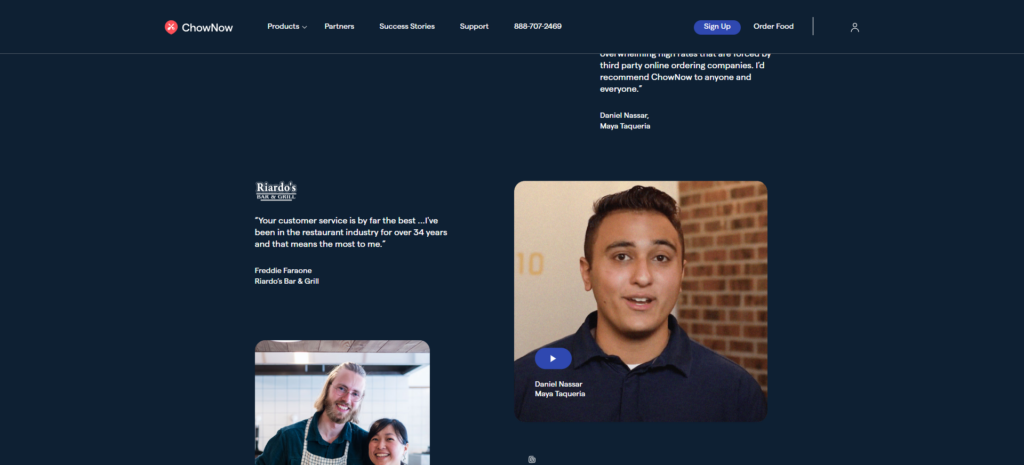
According to Trustmary, 77% of those who have seen a testimonial video about a product or service say that it has motivated them to make a purchase. 47% of people think that video testimonials work because it helps them visualize how a product or service truly works.
37% of people say video testimonials are more authentic than what the company says about its product or service.
And a whopping 42% of people say that video testimonials help viewers to understand an actual customer’s story.
Long story short, don’t underestimate the power of video.
Example #8) of Effective Social Proof
The last example is a website we did for Influence Hunter, an influencer-marketing agency based in L.A.
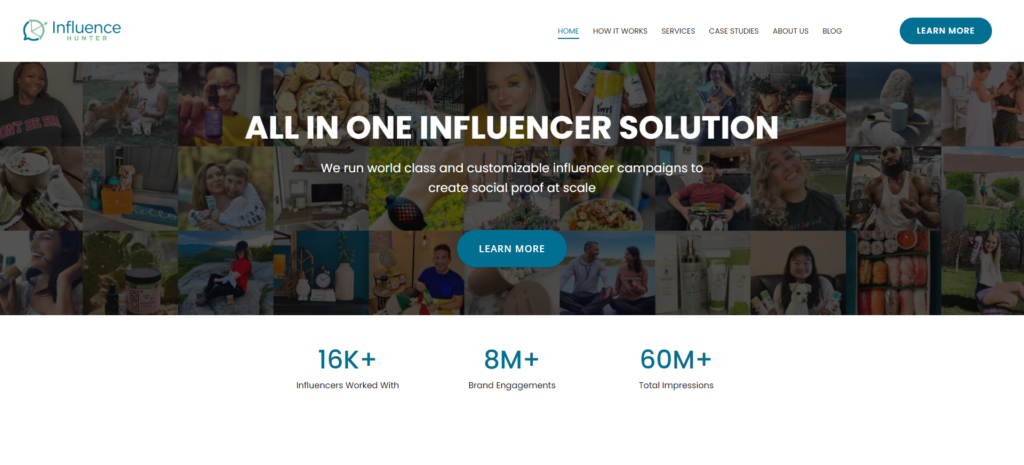

We implemented tons of social proof on their website. This was actually a website redesign we did.
Prior to the redesign, the original website just started off with a section explaining why you should choose Influence Hunter.
Notice in all of the examples we’ve shown thus far, none of them start selling you straight away. They first build that baseline level of trust and credibility before even thinking about selling you.
What was effective about Influence Hunter was that we mixed and matched the social proof which we recommend you do as well.
Don’t just include testimonials. Throw in your case studies for longer forms of social proof, showcase the clients you’ve worked with, featured publications, etc. You can never go wrong with too much social proof on your website.
Here’s the amazing part:
After implementing social proof on Influence Hunter’s website right at the very top, we literally saw user recordings (through a tool called HotJar) see the stats at the very top, click the ‘learn more’ button, and immediately fill out the form.
All in 10 seconds or less.
Social proof definitely works. It is 100% statistically proven to increase your conversion rate if implemented correctly.
I highly recommend you download a tool like HotJar to validate your social proof. Watch recordings of users on your website and see the impact.
Are they scrolling down? How far are they scrolling down? You can track all of this with these analytics and data tools.
How to get social proof:
So the question is, how do you start getting social proof? If you are an established company, it’s as simple as just asking some of your past clients for testimonials and reviews. That’s probably the easiest place you can start.
If you are a brand-new company however, you have to start somewhere. We always tell our clients that having some social proof is always better than having none.
You have to also shift your mindset on social proof. Don’t think of social proof as a one and done thing. Slowly build it up over time and start getting more and more better social proof as your company grows simultaneously, and then update it on your site.
Another tip is make sure you are diversifying your social proof. Don’t put all of your social proof and your eggs into one basket.
Don’t only put social proof on your website. You have to think about how are users interacting with your company or brand across all your digital marketing channels.
So maybe they go and search your company name on Google. Are your Google Reviews up to date and reflecting high-quality feedback?
Is your Yelp account up to date with high-quality reviews? Make sure you also have good content, feedback, and followings on your social media accounts. Wherever someone is searching for your company on the internet, you need to make sure you have social proof to build credibility as an authority in the space.
Be Strategic About your Social Proof:
You must be strategic about how you’re implementing social proof.
For example, if you only have 100 downloads on your app, maybe that’s not the best form of social proof to highlight right at the top of your website.
Instead, you might want to use a testimonial or a case study that is going to be the most impactful factor to build trust with your audience and connect with them.
Misconception about Social Proof:
A common misconception about Social Proof is that it doesn’t matter, which hopefully at this point of the article, has been eliminated at this point.
I remember one of our clients asked us if people actually care about testimonials. They were sharing how in their personal experiences, they never really cared about social proof on a website and just skimmed by it.
You must understand that social proof is actually subconscious. Whether you realize it or not, you are instantly judging a website based on how much trust it builds with you and that 100% directly influences your purchasing decision as a user.
As business owners, we must put ourselves in the shoes of our users. What are they statistically thinking? What is statistically influencing their purchasing decisions? Not what we think may or may not work.
Start doing this today:
Don’t delay social proof any further. Make this the day that you start getting more high-quality social proof or updating the existing proof you already have on your website using the principles shared in this article.
Struggling to come up with the most effective social proof for your website? Book a call with our team for a free website audit where we can provide you and your business with actual concrete improvements you can make instantly. No obligations at all!

Author: Arsh Sanwarwala
Arsh Sanwarwala is the Founder and CEO at ThrillX. He is passionate about UX/UI Design, conversion optimization, and all things digital.
